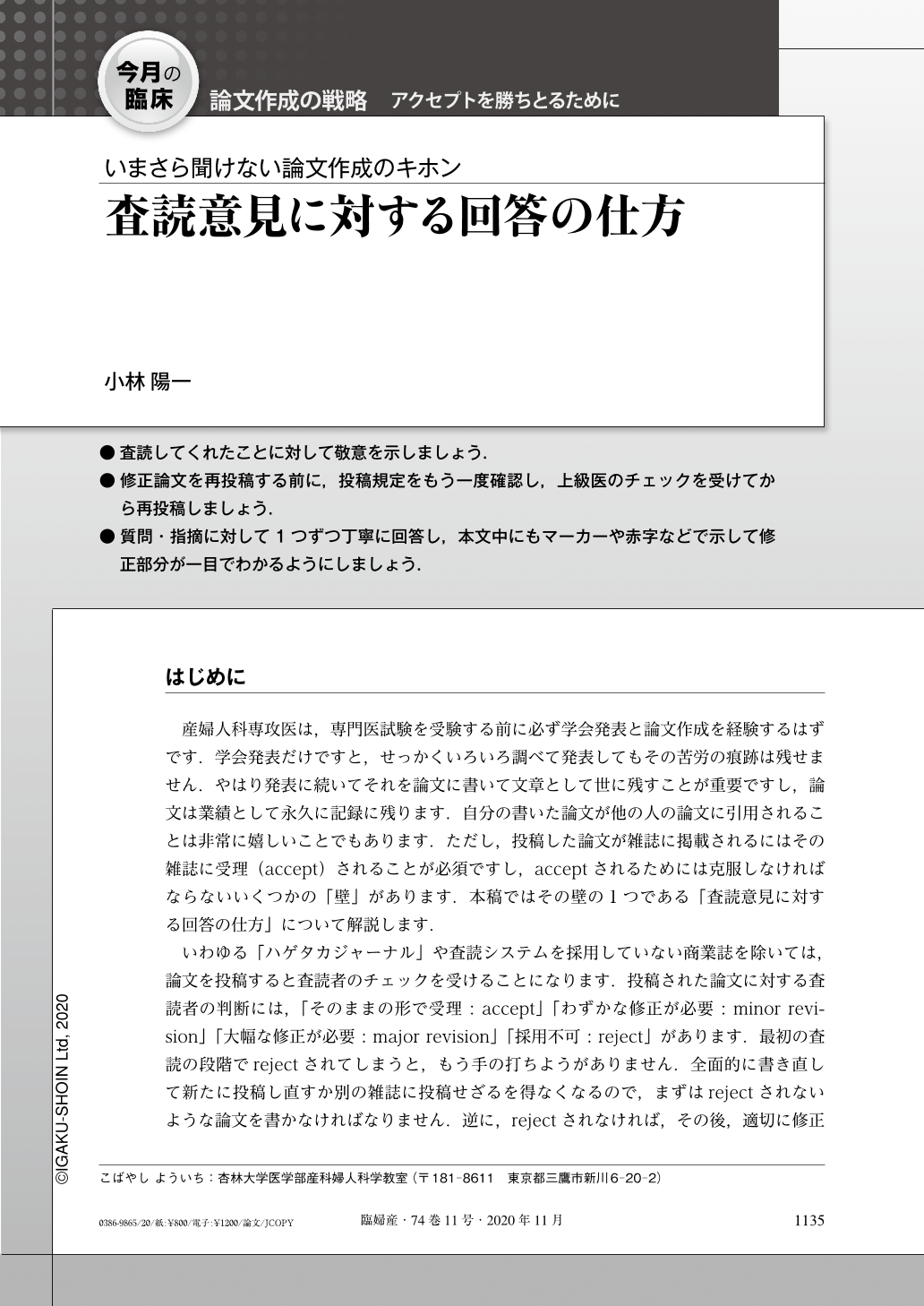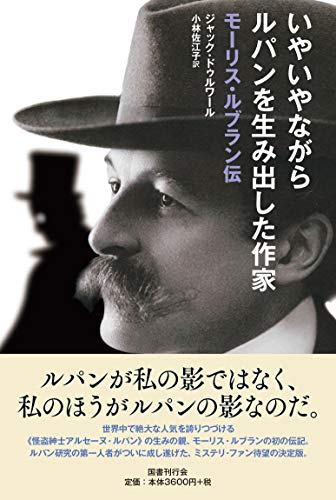1 0 0 0 OA 色のフォークロア研究における諸前提
- 著者
- 小林 忠雄
- 出版者
- 国立歴史民俗博物館
- 雑誌
- 国立歴史民俗博物館研究報告 = Bulletin of the National Museum of Japanese History (ISSN:02867400)
- 巻号頁・発行日
- vol.27, pp.393-415, 1990-03-30
The purpose of this paper is to grasp the color culture mainly of the urban environment in Japan from the viewpoints of the history and folklore, and discusses what sort of materials should be aimed at as the subjects.Firstly, the ranking system of colors of the clothes and the symbolism in the ancient and middle ages in Japan are outlined. Then, the actual states of colors of dresses, props., theatesr, etc. used for “Izumo Kagura”, a folk art currently performed in mountain villages in Izumo-city, Shimane Prefecture are shown. Since this is an art using a myth as its theme, a question is proposed that the symbolism of color in the ancient and middle ages may lie behind.Further, from “Comprehensive folk vocabulary in Japan” compiled by Yanagita Kunio and other folklorists, the words that show four colors, white, black, red and blue are extracted and the symbolisms of the folk natures are described. Combinations of colors such as white and black, white and red, white, black and red, etc. are shown as the basic subjects of color symbolism in the folklore in Japan, referring the examples of Akamata/Kuromata ceremonies in Yaeyama Islands, Okinawa Prefecture.Finally, the words of 783 popular songs often sung by the Japanese are studied to check what sort of color image they have. The result shows that words representing the colors are used frequently in the order of white, red, blue, seven colors and black. In it, color preference and folk symbolism unique to Japanese are included. It is emphasized that the historical study on the color sense of the Japanese is important as one of the subjects of methodology of the folklore study.
1 0 0 0 OA OWHTO術後のプレート抜釘による満足度の検討
- 著者
- 市川 賢 前山 彰 小田 大嘉 中山 鎭秀 石松 哲郎 小林 知弘 鎌田 聡 山本 卓明
- 出版者
- 西日本整形・災害外科学会
- 雑誌
- 整形外科と災害外科 (ISSN:00371033)
- 巻号頁・発行日
- vol.70, no.4, pp.630-633, 2021-09-25 (Released:2021-11-12)
- 参考文献数
- 6
【背景及び目的】内側型変形性膝関節症に対するOWHTOは良好な長期成績が報告されている.インプラントの長期留置に伴う破損,違和感等の合併症が報告され,本邦では抜釘術が行われる傾向にある.一方,抜釘術自体に伴う感染・神経損傷等の危険性もあり海外では抜釘術に関しては一定の見解はない.また,これまでに抜釘術の術後評価を行った研究はない.研究の目的はOWHTOの抜釘術の満足度を調査することである.【対象及び方法】2015年4月から2020年3月までにOWHTOの抜釘術を施行し術後満足度を調査可能であった25例28膝.抜釘術の満足度をアンケートを用いて評価し,術前後の臨床評価スコアとの関連を調査した.【結果】VAS,NRSが術前後でそれぞれ有意に低下を認めた(P<0.05).82%の患者に抜釘術に対して満足/非常に満足との回答が得られた.【結論】OWHTO後の抜釘術により患者満足度は向上する.
1 0 0 0 介護予防のための地域システム構築への取り組み
- 著者
- 三木 千栄 小野部 純 鈴木 誠 武田 涼子 横塚 美恵子 小林 武 藤澤 宏幸 吉田 忠義 梁川 和也 村上 賢一 鈴木 博人 高橋 純平 西山 徹 高橋 一揮 佐藤 洋一郎
- 出版者
- 公益社団法人 日本理学療法士協会
- 雑誌
- 理学療法学Supplement
- 巻号頁・発行日
- vol.2011, pp.Ed0824, 2012
【はじめに、目的】 本学理学療法学専攻の数名の理学療法士と地域包括支援センター(以下、包括センター)と協力して、包括センターの担当地域での一般高齢者への介護予防事業を2008年度から実施し、2011年度からその事業を当専攻で取り組むことした。2010年度から介護予防教室を開催後、参加した高齢者をグループ化し、自主的に活動を行えるよう支援することを始めた。この取り組みは、この地域の社会資源としての当専攻が、高齢者の介護予防にためのシステムを形成していくことであり、これを活動の目的としている。【方法】 包括センターの担当地域は、1つの中学校区で、その中に3つの小学校区がある。包括センターが予防教室を年20回の開催を予定しているため、10回を1クールとする予防教室を小学校区単位での開催を考え、2010年度には2か所、2011年度に残り1か所を予定し、残り10回を小地域単位で開催を計画した。予防教室の目的を転倒予防とし、隔週に1回(2時間)を計10回、そのうち1回目と9回目は体力測定とした。教室の内容は、ストレッチ体操、筋力トレーニング、サイドスッテプ、ラダーエクササイズである。自主活動しやすいようにストレッチ体操と筋力トレーニングのビデオテープ・DVDディスクを当専攻で作製した。グループが自主活動する場合に、ビデオテープあるいはDVDディスク、ラダーを進呈することとした。2010年度はAとBの小学校区でそれぞれ6月と10月から開催した。また、地域で自主グループの転倒予防のための活動ができるように、2011年3月に介護予防サポーター養成講座(以下、養成講座)を、1回2時間計5回の講座を大学内で開催を計画した。2011年度には、C小学校区で教室を、B小学校区で再度、隔週に1回、計4回(うち1回は体力測定)の教室を6月から開催した。当大学の学園祭時に当専攻の催しで「測るんです」という体力測定を毎年実施しており、各教室に参加した高齢者等にそれをチラシビラで周知し、高齢者等が年1回体力を測定する機会として勧めた。A小学校区内のD町内会で老人クラブ加入者のみ参加できる小地域で、体力測定と1回の運動の計2回を、また、別の小地域で3回の運動のみの教室を計画している。また養成講座を企画する予定である。【倫理的配慮、説明と同意】 予防教室と養成講座では、町内会に開催目的・対象者を記載したチラシビラを回覧し、参加者は自らの希望で申し込み、予防教室・養成講座の開催時に参加者に対して目的等を説明し、同意のうえで参加とした。【結果】 A小学校区での転倒予防教室には平均26名の参加者があり、2010年11月から自主グループとして月2回の活動を開始し、現在も継続している。B小学校区では毎回20名程度の参加者があったが、リーダーとなる人材がいなかったため自主活動はできなかった。2011年度に4回コースで再度教室を実施し、平均36名の参加者があった。教室開始前から複数名の参加者に包括センターが声掛けし、自主活動に向けてリーダーとなることを要請し承諾を得て、2011年8月から月2回の活動を始めた。A・B小学校区ともにビデオあるいはDVDを使用して、運動を実施している。C小学校区では2011年6月から教室を開始し、平均14名の参加者であった。教室の最初の3回までは約18名の参加であったが、その後7名から14名の参加で、毎回参加したのは3名だけで自主活動には至らなかった。2010年度3月に予定していた養成講座は、東日本大震災により開催できなかったが、25名の参加希望者があった。A小学校区内の小地域での1回目の予防教室の参加者は16名であった。大学の学園祭での「測るんです」の体力測定には139名の参加者があり、そのうち数名であるが教室の参加者も来場された。【考察】 事例より、予防教室後に参加者が自主活動するには、活動できる人数の参加者がいること、リーダーとなる人材がいること、自主活動の運営に大きな負担がないことなどの要因があった。自主グループの活動やそれを継続には、2011年3月の地震後、高齢者の体力維持・増進が重要という意識の高まりも影響を及ぼしている。C小学校区の事例で、自主活動できなかった要因を考えるうえで、A・B小学校区と異なる地域特性、地域診断を詳細にする必要性があると考える。リーダーを養成することでC小学校区での高齢者が自主活動できるか検討する必要もある。高齢者の身体状況に合わせて、自主活動できる場所を小学校区単位、小地域単位で検討する必要がある。【理学療法学研究としての意義】 介護予防事業を包括センター、予防事業所などだけが取り組む事業ではなく、理学療法士が地域の社会資源としてそのことに取り組み、さらに介護予防、健康増進、障害、介護に関することなどの地域社会にある課題を住民とともに解決するための地域システムを構築していくことは、現在の社会のなかでは必要であると考える。
- 著者
- 小林 幹夫 濱道 寿幸
- 出版者
- 宇都宮大学農学部
- 雑誌
- 宇都宮大学農学部演習林報告 (ISSN:02868733)
- 巻号頁・発行日
- no.37, pp.187-198, 2001-03
1998年2月から12月まで、奥日光・小田代原南測山地林の約4km2に出現するササ類の分布、生態(稈の生長、葉の展開、冬芽形成、隈取形成、積雪深、エンドファイトの有無)、生存枯死状況、ニホンジカによる食害状況を調べ、相互の因果関係を分析した。調査地内にはササ属ミヤコザサ節、クマイザサ、オクヤマザサ、ミヤコザサ-チマキザサ複合体(ミヤコチマキと呼称)、スズダケ、ナンブスズの6分類群が出現した。これらの分布図に生存枯死状況を重ね合わせた結果、ミヤコチマキ、オクヤマザサが全面枯死もしくは枯死寸前の状況にある反面、クマイザサ、ミヤコザサ、ナンブスズ及びスズダケでは健全であった。23ヶ所に2×2mの方形枠を設け、各プロット内におけるシカの食害状況を追跡調査した結果、互いに隣接する場所にもかかわらず、ミヤコチマキ、オクヤマザサ、ミヤコザサが顕著に食害を受けるのに対して、クマイザサ、ナンブスズ、スズダケはほとんど受けなかった。これらの結果は、シカがミヤコチマキ、オクヤマザサ、ミヤコザサを選択的に摂食することを示した。選択的食害を受ける3者の間での生存枯死状況の相違は冬芽が形成される位置に依存すること、積雪やエンドファイトの有無は選択性の直接的な要因ではないことが分った。
1 0 0 0 OA カエル聴覚における感覚毛の能動特性
- 著者
- 小林 正和 石渡 信吾
- 出版者
- 一般社団法人 日本物理学会
- 雑誌
- 日本物理学会講演概要集 72.2 (ISSN:21890803)
- 巻号頁・発行日
- pp.2643, 2017 (Released:2018-11-13)
- 著者
- 西久保 智昭 小林 泰秀
- 出版者
- 自動制御連合講演会
- 雑誌
- 自動制御連合講演会講演論文集
- 巻号頁・発行日
- vol.54, pp.50, 2011
本稿では柔軟片持ち梁のフィードフォワード外乱抑制制御系の設計問題において,指向性アクチュエータの効果を実験的に検証する.物理モデルおよび周波数応答実験に基づき以下の知見を得た:開ループのフィードバックパス伝達関数に対して位相遅れが増加する.次にモデル化誤差を考慮せずに求めたH∞補償器と仮想的補償器に基づき以下の知見を得た:補償器のピークゲインが抑制され,その数も少なくなる.
- 著者
- 山口 開 奥瀬 千晃 鈴木 啓弘 小林 裕太郎 長田 達郎 巴 雅威 遠山 裕樹 林 毅 吉田 秀樹 高橋 泰人 前山 史朗 打越 敏之 飯野 四郎
- 出版者
- 一般社団法人 日本肝臓学会
- 雑誌
- 肝臓 (ISSN:04514203)
- 巻号頁・発行日
- vol.39, no.1, pp.18-22, 1998-01-25
- 参考文献数
- 19
- 被引用文献数
- 1
症例は23歳, 女性. 飲酒歴, 輸血歴および鍼灸治療歴はない. 常用薬剤なし. 感冒様症状に伴う食欲不振, 腹部不快感および2週間で約4kgの体重減少を主訴に近医を受診した. 生化学検査でtransaminaseの上昇を認め急性肝炎が疑われ当科紹介, 入院となった. 入院時現症では標準体重の-32%のるいそうを認め, 入院時検査所見では総蛋白, コリンエステラーゼの低下及びtransaminaseの上昇が認められた. しかし肝炎ウイルスマーカーはすべて陰性で, 抗核抗体および抗ミトコンドリア抗体も検出されず免疫グロブリンはいずれも正常ないし軽度低下を呈した. 腹部超音波およびCTでは著明な脂肪肝を認めた. 肝生検像では肝実質にacuteyellow collapsed cellを含む巣状壊死を散見し, 大脂肪滴沈着をzone 2~3に小葉の1/2以上に認め飲酒歴がないことからnon-alcoholic steatohepatitisと診断した. 本例は肥満, 耐糖能異常を伴わず, 薬剤服用歴もなく経過より急激な栄養障害による飢餓状態が原因と考えられた
1 0 0 0 42 気象病に関する研究
1 0 0 0 49気象病に関する研究 (第2報)
1 0 0 0 査読意見に対する回答の仕方
1 0 0 0 千葉県印旛沼流域における外来種カミツキガメの分布と食性
- 著者
- 小林 頼太 長谷川 雅美 宮下 直
- 出版者
- 日本生態学会
- 雑誌
- 日本生態学会大会講演要旨集
- 巻号頁・発行日
- vol.52, pp.795, 2005
カミツキガメ(<i>Chelydara serpentina</i>)は淡水から汽水域にかけて生息するアメリカ原産の雑食性カメ類である.日本へは,1960年代からペットとして輸入され,近年では全国各地から野外へ逸出した個体が発見されるようになった.千葉県印旛沼周辺では1990年代中頃より本種が頻繁に発見されるようになり,2002年には国内で初めてカミツキガメの定着が確認された.カミツキガメは在来種と比較して大型であり,また多産であることから個体数が増加した場合,生態系へ大きな影響を及ぼす可能性がある. そこで本研究ではカミツキガメの管理を目的とし,まず,本種の印旛沼流域における分布を調査した. 2000年から2004年の期間に印旛沼流域において,罠掛けによる捕獲および聞き取り調査を行った結果,カミツキガメが確認された地点は流入河川である鹿島川及びその支流に偏っており,こうした傾向に顕著な変化は認められなかった.また, 2002, 2003年に合計28個体(オス10,メス18)に電波発信機を装着し,利用区間距離を記録した結果,外れ値の1個体を除いた27個体の平均(±SD)は405±192mであり,性差は見られなかった.また,この傾向は追跡期間(18-597日)とは相関がなかった.外れ値の 1個体に関しては短期間に移動し,最終的に利用区間は約2300mとなった. 次に,消化管および糞内容物から,カミツキガメを支える餌生物について評価した.その結果,カミツキガメは主に水草やアメリカザリガニなど,環境中に豊富にある資源を摂食していた.これらの結果をふまえ,今後のカミツキガメの管理方針について検討を行う.
1 0 0 0 OA カカオ含量の異なるチョコレート摂取による脳波及び自律神経の変化
- 著者
- 須田 有実子 原 知世 村上 舞花 小林 三智子
- 出版者
- 一般社団法人 日本家政学会
- 雑誌
- 一般社団法人日本家政学会研究発表要旨集 69回大会(2017)
- 巻号頁・発行日
- pp.117, 2017 (Released:2017-07-08)
【目的】カカオ含量の異なる3種類のチョコレートを摂取することにより脳波及び自律神経活動がどのように変化するかを解析することを目的とした。【方法】カカオ含量の異なるチョコレート3種類(33%、56%、70%)を試料とした。実験協力者は、パネル選別試験に合格した20~21歳の女性15名であった。脳波の測定にはミューズブレインシステム(株式会社デジタルメディック)を用い、チョコレート摂取前(安静時)、摂取中、摂取後の3時点において、各20秒間3種のチョコレートで繰り返し測定を行った。脳波が正しく検出されるように、測定間でリセットとして暗算を行った。自律神経の測定には加速度脈波測定システム アルテット(株式会社ユメディカ)を用い、安静時及び各チョコレート摂取後に各2分間測定を行った。測定間には、実験協力者にストレスを与えないように5分間の休憩を交えた。脳波と自律神経の測定時にはパソコンに映し出される車窓の映像を眺める状態とし、測定条件を一定にした。【結果】脳波は、測定不能者1名を除いた14名のデータを解析したところ、チョコレート摂取後にα波が安静時に比べて摂取後に増加した人がカカオ含量33%で5人、56%で5人、70%で4人であった。自律神経活動での測定では、15名中8名がチョコレート摂取により、LF/HF-MEMは副交感神経が優位となり、くつろいで落ち着いている状態であった。
1 0 0 0 エイサー--沖縄の夏の風物詩 (特集 島唄の魅力)
1 0 0 0 OA 今帰仁エイサーの音楽 : 崎山・兼次・今泊の資料化を通して
- 著者
- 小林 公江 小林 幸男
- 出版者
- 沖縄県立芸術大学
- 雑誌
- 沖縄芸術の科学 : 沖縄県立芸術大学附属研究所紀要 (ISSN:09149074)
- 巻号頁・発行日
- vol.9, pp.71-148, 1997-03-31
1 0 0 0 OA 特集「緑地とグリーンインフラ―緑化工学からの新たな展開」
1 0 0 0 いやいやながらルパンを生み出した作家 : モーリス・ルブラン伝
- 著者
- ジャック・ドゥルワール著 小林佐江子訳
- 出版者
- 国書刊行会
- 巻号頁・発行日
- 2019
- 著者
- 松本 忠彦 白川 康太郎 横山 勝 福田 寛文 サルカ アナマリア ダニエラ 小藪 助直 山崎 寛章 数馬 安浩 松井 宏行 丸山 亙 永田 佳代子 田邊 史子 小林 正行 新堂 啓祐 森下 了 佐藤 裕徳 髙折 晃史
- 出版者
- Springer Science and Business Media LLC
- 雑誌
- Scientific Reports (ISSN:20452322)
- 巻号頁・発行日
- no.9, 2019-06-05
がんに遺伝子変異を導入する酵素の分子スイッチを発見 --リン酸化によるDNAシトシン脱アミノ化酵素の活性制御機構--. 京都大学プレスリリース. 2019-06-07.
1 0 0 0 OA フランス革命における貴族土地所有の残存
- 著者
- 小林 良彰 Yoshiaki Kobayashi
- 出版者
- 同志社大学商学会
- 雑誌
- 同志社商学 = Doshisha Shogaku (The Doshisha Business Review) (ISSN:03872858)
- 巻号頁・発行日
- pp.132-148, 1968-12-15
研究
- 著者
- 小林 厚史 塚越 秀行
- 出版者
- 一般社団法人 日本機械学会
- 雑誌
- ロボティクス・メカトロニクス講演会講演概要集
- 巻号頁・発行日
- vol.2019, pp.2A2-R03, 2019
<p>This paper describes the development of a flexible cable type robot aimed to travel in the sand available for rescue operation or marine resource exploration. To realize it, we have developed a robot made of soft tube material driven by pneumatics, inspired by the garden eel capable of diving in the sand quickly and deeply. In this study, we propose a new structure thinner than the previous one, aiming to dive into 350mm of depth with the reduction of consumed air, enhancement of response, and improvement of insertability. Finally, we verify the validity of the proposed structure through the experiment by the prototype.</p>





